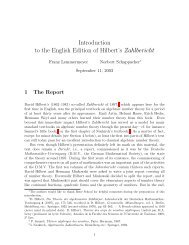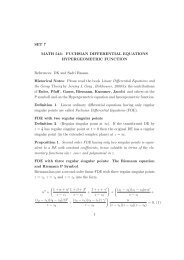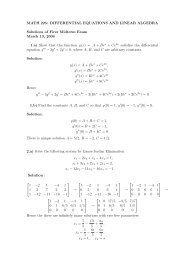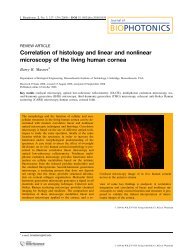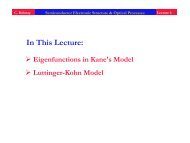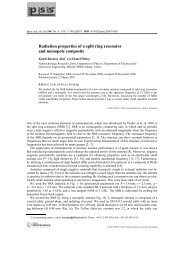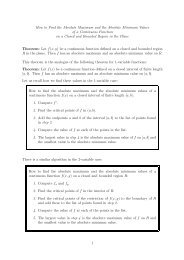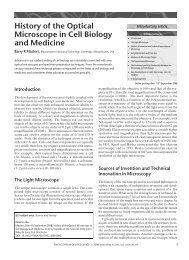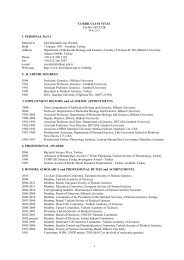Create successful ePaper yourself
Turn your PDF publications into a flip-book with our unique Google optimized e-Paper software.
1. Pick a > 1 and check that gcd(a, N) = 1<br />
2. Choose a bound B, say B = 10 4 , 10 5 , 10 6 , ...<br />
3. Pick k as in (7.3) and compute D = gcd(a k − 1, N).<br />
Note that the computation <strong>of</strong> a k can be done modulo N; if p | N and<br />
(p − 1) | k, then a k ≡ 1 mod p, hence p | D.<br />
If D = 1, we may increase k; if D = N, we can reduce k and repeat the<br />
computation.<br />
Among the record factors found by the p − 1-method is the 37-digit factor<br />
p = 6902861817667290192729108442204980121 <strong>of</strong> 71 77 − 1 with p − 1 = 2 3 · 3 3 ·<br />
5·7·11·13·401·409·3167·83243·83983·800221·2197387 discovered by Dubner.<br />
A list <strong>of</strong> record factors can be found at<br />
http://www.users.globalnet.co.uk/ ∼ aads/Pminus1.html<br />
Here’s a baby example: take N = 1769, a = 2 and B = 6. <strong>The</strong>n we compute<br />
k = 2 2·3·5 and we find 2 60 ≡ 306 mod 1769, gcd(305, 1769) = 61 and N = 29·61.<br />
Note that 61 − 1 = 2 2 · 3 · 5, so the factor 61 was found, while 29 − 1 = 2 2 · 7<br />
explains why 29 wasn’t (although 29 < 61).<br />
Another large class <strong>of</strong> factorization algorithms is based on an algorithm<br />
invented by <strong>Fermat</strong>: the idea is to write an integer n as a difference <strong>of</strong> squares.<br />
If n = x 2 −y 2 , then n = (x−y)(x+y), and unless this is the trivial factorization<br />
n = 1 · n, we have found a factor.<br />
Another baby example: take n = 1073; then √ n = 32.756 . . ., so we start by<br />
trying to write n = 33 2 − y 2 . Since 33 2 − 1073 = 16, we find n = 33 2 − 4 2 =<br />
(33 − 4)(33 + 4) = 29 · 37. If the first attempt would have been unsuccessful, we<br />
would have tried n = 34 2 − y 2 , etc.<br />
In modern algorithms (continued fractions, quadratic sieve, number field<br />
sieve) the equation N = x 2 − y 2 is replaced by a congruence x 2 ≡ y 2 mod N: if<br />
we have such a thing, then gcd(x−y, N) has a good chance <strong>of</strong> being a nontrivial<br />
factor <strong>of</strong> N. <strong>The</strong> first algorithm above constructed such pairs (x, y) by computing<br />
the continued fraction expansion <strong>of</strong> √ n (which we have not discussed), the<br />
number field sieve produces such pairs by factoring certain elements in algebraic<br />
number fields.<br />
Exercises<br />
7.1 Compute the addition and multiplication tables for the ring Z/2Z ⊕ Z/2Z, and<br />
compare the result to those for Z/4Z.<br />
7.2 Do the same exercise for the rings Z/2Z ⊕ Z/3Z and Z/6Z.<br />
7.3 Find all integers with φ(m) = 6.<br />
7.4 Show that m is prime if and only if φ(m) = m − 1.<br />
75




